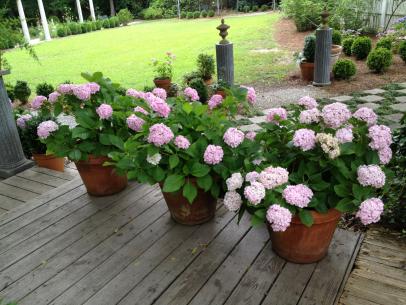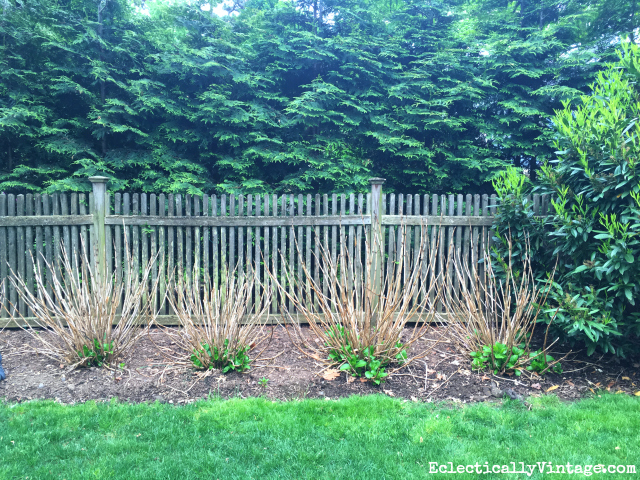Dormant Hydrangeas: What You Need To Know
Dormant Hydrangeas: What You Need to Know
Hydrangeas are beautiful flowering shrubs that can add a touch of elegance to any garden. However, these plants also go dormant in the winter, which can be a source of confusion for many gardeners.
In this blog post, we will discuss everything you need to know about dormant hydrangeas. We will cover topics such as:
- What is dormancy?
- How do you know if your hydrangea is dormant?
- What care do dormant hydrangeas need?
- When will your hydrangea come out of dormancy?
We will also provide some tips on how to care for your hydrangeas so that they will bloom beautifully next year.
What is Dormancy?
Dormancy is a natural process that allows plants to survive harsh winter conditions. During dormancy, plants slow down their growth and metabolism, and their leaves and flowers fall off. This helps the plants to conserve energy and resources until the weather warms up again.
Hydrangeas are deciduous shrubs, which means that they lose their leaves in the fall. Once the leaves have fallen off, the hydrangea will enter a state of dormancy. The plant will not grow or bloom during this time, but it will still be alive.
How Do You Know If Your Hydrangea Is Dormant?
There are a few ways to tell if your hydrangea is dormant. One way is to look at the leaves. If the leaves have fallen off, then the hydrangea is most likely dormant. Another way to tell is to look at the stems. If the stems are brown and dry, then the hydrangea is also dormant.
If you are still not sure if your hydrangea is dormant, you can scratch the bark of one of the stems. If the bark is green underneath, then the hydrangea is still alive. If the bark is brown and dry, then the hydrangea is dead.
What Care Do Dormant Hydrangeas Need?
Dormant hydrangeas do not need much care. You should water them occasionally, especially if the weather is dry. You should also avoid fertilizing them during this time.
If you live in an area with cold winters, you may need to protect your hydrangeas from the cold. You can do this by covering them with a burlap sack or by wrapping them with a layer of horticultural fleece.
When Will Your Hydrangea Come Out of Dormancy?
The time when your hydrangea will come out of dormancy depends on your climate. In most cases, hydrangeas will start to come out of dormancy in the spring, when the weather starts to warm up.
Once your hydrangea comes out of dormancy, you will start to see new leaves and flowers. You can start to fertilize your hydrangea again at this time.
Tips for Caring for Dormant Hydrangeas
Here are a few tips for caring for dormant hydrangeas:
- Water them occasionally, especially if the weather is dry.
- Avoid fertilizing them during this time.
- If you live in an area with cold winters, protect them from the cold.
- Once they come out of dormancy, fertilize them again.
By following these tips, you can help your hydrangeas to survive the winter and bloom beautifully next year.
As the weather cools down and the days get shorter, your hydrangeas may start to look a little sad. Don't worry, this is perfectly normal! Hydrangeas are deciduous shrubs, which means they lose their leaves and go dormant in winter. This is when the plant takes a break from growing and uses its energy to store up nutrients for the next season.
If you're wondering how to care for your dormant hydrangeas, has a wealth of information. Their website includes articles on topics such as:
- How to identify if your hydrangea is dormant
- When to prune dormant hydrangeas
- How to protect dormant hydrangeas from the cold
- How to fertilize dormant hydrangeas
also offers a variety of resources, such as videos, webinars, and even a plant care hotline. So whether you're a beginner or a seasoned hydrangea grower, you're sure to find something helpful on their website.
FAQ of dormant hydrangea
- Q: Do hydrangeas need to go dormant? A: Yes, hydrangeas need to go dormant in order to survive the winter. During dormancy, the plant's growth slows down or stops completely, and its leaves fall off. This allows the plant to conserve energy and protect itself from cold weather.
- Q: What happens to hydrangeas in the winter? A: In the winter, hydrangeas will lose their leaves and go dormant. The plant's roots will remain active, but the above-ground parts of the plant will cease to grow. This is a normal part of the hydrangea's lifecycle, and it is nothing to worry about.
- Q: When do hydrangeas come out of dormancy? A: Hydrangeas typically come out of dormancy in the spring, when the weather starts to warm up. The plant will start to grow new leaves, and it may even flower.
- Q: How can I care for a dormant hydrangea?
A: There are a few things you can do to care for a dormant hydrangea:
- Water the plant regularly, but not too much. You want to keep the soil moist, but not soggy.
- Mulch around the plant to help insulate it from the cold.
- Protect the plant from strong winds and cold temperatures.
- Q: What should I do if my hydrangea is not coming out of dormancy?
A: If your hydrangea is not coming out of dormancy, there are a few possible reasons:
- The plant may not have been watered enough during the winter.
- The plant may have been exposed to too much cold weather.
- The plant may be diseased or infested with pests. If you are concerned about your hydrangea, it is best to consult with a gardening expert.
Image of dormant hydrangea
Here are 5 images of dormant hydrangeas from Pinterest:
- Dormant hydrangea in a pot. The hydrangea is bare of leaves, but the woody stems are still green. The pot is covered in a layer of mulch to protect the roots from the cold.

- Dormant hydrangea in the ground. The hydrangea is surrounded by brown leaves and other debris. The branches are bare, but the buds are starting to form for the following spring.

- Dormant hydrangea in a garden. The hydrangea is surrounded by other dormant plants. The flowers have all fallen off, but the leaves are still attached to the branches.

- Dormant hydrangea against a fence. The hydrangea is covered in a layer of snow. The branches are bare, but the buds are starting to form for the following spring.

- Dormant hydrangea in a vase. The hydrangea is arranged in a vase with other dried flowers. The petals are a light pink color.

Post a Comment for "Dormant Hydrangeas: What You Need To Know"